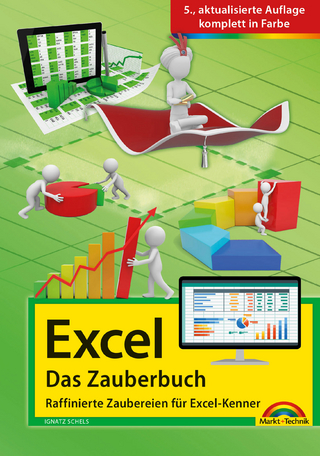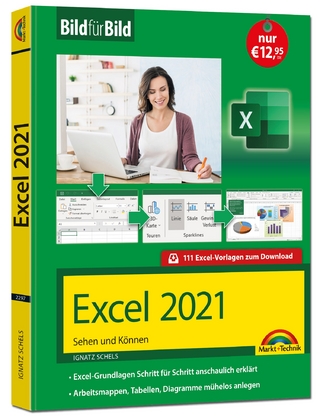
Construction Estimating Using Excel
Pearson (Verlag)
978-0-13-440550-6 (ISBN)
A step-by-step, hands-on introduction to commercial and residential estimating
Construction Estimating with Excel, 3/e, introduces readers to the fundamental principles of estimating using drawing sets, real-world exercises, and examples. The book moves step-by-step through the estimating process, discussing the art of estimating, the quantity takeoff, how to put costs to the estimate, and how to finalize the bid. As students progress through the text they are shown how Microsoft Excel can be used to improve the estimating process. Because it introduces spreadsheets as a way of increasing estimating productivity and accuracy, the book can help both beginning and experienced estimators improve their skills.
The Third Edition gives students a broader understanding of construction estimating with a new chapter discussing the role that estimating plays in different project delivery methods and in the design process and how to use data from RSMeans. To bring the book up to date, the material and equipment costs and labor rates have been updated to reflect current costs, and the discussion of Excel (including the figures) is based on Excel 2016. Additionally, content throughout the book has been updated to align to ACCE and ABET student learning outcomes. Student resources are available on the companion website www.pearsonhighered.com/careersresources/.
Steven J. Peterson is a professor of construction management at Weber State University, where he joined the faculty in 2000. Steven received an MBA and a BS in engineering from the University of Utah. He is a licensed professional engineer and a member of the Design-Build Institute of America. Steve’s area of expertise is the business side of running a construction company and managing construction projects. He is the author of Pearson’s Pocket Guide to Construction Management (Pearson 2012) and two textbooks, Construction Accounting and Financial Management (Pearson 2013) and Construction Estimating Using Excel (Pearson 2017). He is the coauthor of a third textbook, Estimating in Building Construction (Pearson 2015). In 2011, Steven was named Associated Schools of Construction (ASC) Region 6 Outstanding Educator. This was one of three awards given from regions around the country. The award recognizes someone who contributes to construction education, excels in teaching, and is dedicated to the construction profession. Before coming to Weber State, Steven spent 15 years working in the construction industry. He has worked on the design and construction of hazardous/radioactive waste landfills, numerous multi-family projects, and other commercial construction.
PART I INTRODUCTION TO ESTIMATING
Chapter 1 THE ART OF ESTIMATING
The Estimator
Types of Estimates
Bid Package
Estimating Tools
Computerized Estimating Conclusion
Problems
References
Chapter 2 OVERVIEW OF THE ESTIMATING AND BIDDING PROCESS
Planning the Bid
Pre—Bid-Day Activities
Bid-Day Activities
Post-Bid Activities
Information Flow
Conclusion
Problems
Chapter 3 INTRODUCTION TO EXCEL
Conventions Used in This Book
Workbook Management
Working with Worksheets
Entering Data
Formatting Worksheets
Writing Formulas
Basic Functions
Printing
Testing Spreadsheets
Conclusion
Problems
PART II THE QUANTITY TAKEOFF
Chapter 4 FUNDAMENTALS OF THE QUANTITY TAKEOFF
Performing a Quantity Takeoff
Work Packages
Communication with the Field
Counted Items
Linear Components
Sheet and Roll Goods
Volumetric Goods
Quantity-From-Quantity Goods
Waste
Building Information Modeling (BIM)
Conclusion
Problems
Reference
Chapter 5 CONCRETE
Forms
Reinforcing
Concrete
Spread Footings
Columns
Continuous Footings
Foundation Walls
Beams
Slab on Grade
Raised Slabs
Stairs
Sample Takeoff for the Residential Garage
Conclusion
Problems
Chapter 6 MASONRY
Block and Structural Brick Walls
Brick Veneer
Conclusion
Problems
Chapter 7 METALS
Types of Structural Steel
Common Shapes for Structural Steel
Beams, Girders, and Columns
Joists and Joist Girders
Metal Deck
Steel Trusses
Stairs and Handrail
Miscellaneous Steel
Conclusion
Problems
Chapter 8 WOODS, PLASTICS, AND COMPOSITES
Floor Systems
Walls
Roof Systems
Finish Carpentry
Cabinetry and Countertops
Sample Takeoff for the Residential Garage
Conclusion
Problems
Reference
Chapter 9 THERMAL AND MOISTURE PROTECTION
Waterproofing and Dampproofing
Building Paper and Vapor Barriers
Insulation
Exterior Insulation Finish System
Shingle Roofs
Siding, Soffit, and Fascia
Membrane Roofing
Sample Takeoff for the Residential Garage
Conclusion
Problems
References
Chapter 10 OPENINGS
Doors
Windows
Commercial Storefront
Glazing
Hardware
Sample Takeoff for the Residential Garage
Conclusion
Problems
Reference
Chapter 11 FINISHES
Metal Stud Partitions
Gypsum Board
Tile
Suspended Acoustical Ceilings
Wood and Laminate Floors
Sheet Vinyl
Vinyl Composition Tile
Rubber Base
Carpet and Pad
Paint
Sample Takeoff for the Residential Garage
Conclusion
Problems
Chapter 12 FIRE SUPPRESSION
Conclusion
Problems
Chapter 13 PLUMBING
Water Supply
Drain-Waste-and-Vent System
Fixtures and Equipment
Conclusion
Problems
Chapter 14 HEATING, VENTILATION, AND AIR-CONDITIONING (HVAC)
Residential HVAC Systems
Commercial HVAC Systems
Conclusion
Problems
Chapter 15 ELECTRICAL
Residential Wiring
Commercial Wiring
Sample Takeoff for the Residential Garage
Conclusion
Problems
Chapter 16 EARTHWORK
Characteristics of Soils
Swell and Shrinkage
Geometric Method
Average-Width-Length-Depth Method
Average-End Method
Modified-Average-End Method
Cross-Sectional Method
Comparison of Methods
Backfill
Soils Report
Sample Takeoff for the Residential Garage
Conclusion
Problems
Chapter 17 EXTERIOR IMPROVEMENTS
Asphalt and Base
Site Concrete
Landscaping
Sample Takeoff for the Residential Garage
Conclusion
Problems
Chapter 18 UTILITIES
Excavation
Bedding
Utility Lines
Backfill
Conclusion
Problems
PART III PUTTING COSTS TO THE ESTIMATE
Chapter 19 MATERIAL PRICING
Shipping Costs
Sales Tax
Storage Costs
Escalation
Conclusion
Problems
Chapter 20 LABOR PRODUCTIVITY AND HOURS
Factors Affecting Labor Productivity
Historical Data
Field Observations
National Standards
Labor Hours
Conclusion
Problems
Reference
Chapter 21 LABOR RATES
Billable Hours
Wages
Fair Labor Standards Act
Davis-Bacon Act
Labor Contracts
State and Local Employment Laws
Cash Equivalents and Allowances
Payroll Taxes
Unemployment Insurance
Workers’ Compensation Insurance
General Liability Insurance
Insurance Benefits
Retirement Contributions
Union Payments
Other Benefits
Annual Costs and Burden Markup
Conclusion
Problems
References
Chapter 22 EQUIPMENT COSTS
Depreciation and Interest
Taxes and Licensing
Insurance
Storage
Hourly Ownership Cost
Tires and Other Wear Items
Fuel
Lubricants and Filters
Repair Reserve
Leased Equipment
Rented Equipment
Conclusion
Problems
Chapter 23 CREW RATES
Conclusion
Problems
Chapter 24 SUBCONTRACT PRICING
Request for Quote
Writing a Scope of Work
Historical
Bid Selection
Conclusion
Problems
Chapter 25 MARKUPS
Building Permits
Payment and Performance Bonds
Profit and Overhead
Conclusion
Problems
Reference
Chapter 26 PRICING EXTENSIONS
Detail Worksheet
Material Costs
Labor Costs
Equipment Costs
Total Cost
Summary Worksheet
Sample Estimate: The Residential Garage
Conclusion
Problems
Chapter 27 AVOIDING ERRORS IN ESTIMATES
List Cost Codes
Spend More Time on Large Costs
Prepare Detailed Estimates
Mark Items Counted during the Quantity Takeoff
Double-Check All Takeoffs
Include Units in Calculations
Automate with Spreadsheets
Use Well-Tested and Checked Formulas
Double-Check All Calculations
Perform Calculations in Two Ways
Drop the Pennies
Have Someone Review the Estimate
Review Each Cost Code as a Percentage of the Total Cost
Check Unit Costs for Each Cost Code
Compare Costs to Those for Another Project
Allow Plenty of Time
Conclusion
Problems
PART IV FINALIZING THE BID
Chapter 28 SUBMITTING THE BID
Bid Submission with Standardized Documents
Writing a Proposal
Writing a Business Letter
Letter Formats
Writing E-mails
Conclusion
Problems
Chapter 29 PROJECT BUYOUT
Subcontracts
Purchase Orders
Contracts for Materials
Conclusion
Problems
Chapter 30 THE ESTIMATE AS THE BASIS OF THE SCHEDULE
Estimating Durations
Sample Durations: The Residential Garage
Conclusion
Problems
Chapter 31 ETHICS
Work Ethic
Bidding Practices
Loyalty to Employer
Ethical Dilemmas
Conclusion
Problems
Reference
PART V ADVANCED ESTIMATING
Chapter 32 CONVERTING EXISTING FORMS
Creating the Layout
Adding Formulas
Automating with Macros
Testing the Worksheets
Adding Error Protection
Conclusion
Problems
Chapter 33 CREATING NEW FORMS
Planning New Forms
Setting Up the Spreadsheet
Series
Naming Cells
Adding Dropdown Boxes
Referencing Worksheets in a Formula
Concatenate
LOOKUP and VLOOKUP
Proposals
Conclusion
Problems
Chapter 34 Other Estimating methods
Design Process
Delivery Methods
Project Comparison Method
Square-Foot Estimating
Assembly Estimating
And Beyond
Conclusion
Problems
References
Appendix A REVIEW OF ESTIMATING MATH
Lengths
Scaling
Pythagorean Theorem
Areas
Volumes
Conversion Factors
Appendix B SAMPLE JOB COST CODES
Appendix C SAMPLE LABOR PRODUCTIVITY RATES
Appendix D SAMPLE EQUIPMENT COSTS
Appendix E MODEL SCOPES OF WORK
Footings and Foundations
Framing
Finish Carpentry
Drywall
Floor Coverings
Painting and Staining
Fire Sprinklers
Plumbing
HVAC
Electrical
Earthwork and Utilities–Roads and Parking Lots
Landscaping
Appendix F GLOSSARY
Appendix G INDEX OF DRAWING SETS
| Erscheinungsdatum | 01.03.2017 |
|---|---|
| Sprache | englisch |
| Maße | 225 x 290 mm |
| Gewicht | 1295 g |
| Themenwelt | Schulbuch / Wörterbuch |
| Informatik ► Office Programme ► Excel | |
| Technik ► Bauwesen | |
| ISBN-10 | 0-13-440550-1 / 0134405501 |
| ISBN-13 | 978-0-13-440550-6 / 9780134405506 |
| Zustand | Neuware |
| Haben Sie eine Frage zum Produkt? |
aus dem Bereich


